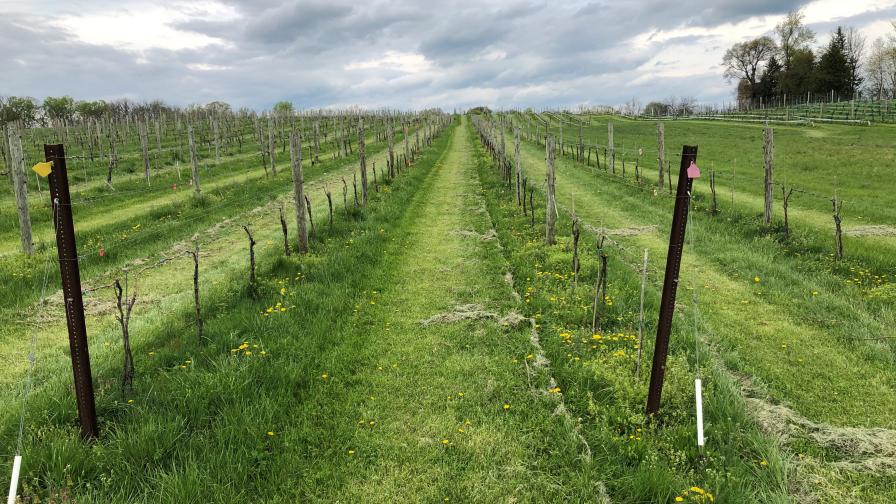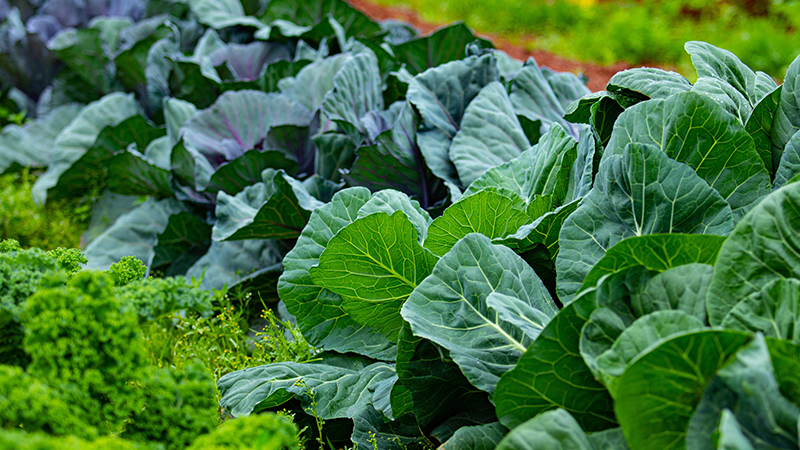The Benefits of Cover Crops When It Comes To Vineyard Design

Keeping soil covered with a cover crop will stabilize the soil, protecting it from erosion and soil compaction.
Photo by Tremain Hatch
Often folks planting their first vineyard in the Eastern U.S. want to get the vines planted ASAP … if not yesterday. I can understand their excitement. However, there is a research-based recommendation to get the groundcover in order before planting the vines.
I agree with this recommendation for more than one reason. In addition to the benefits of good groundcover, it will force folks to take an appropriate timeline in vineyard development. One of the cruel realities for new grape growers is the importance of decisions made in vineyard design and planting that happen when new grape growers have the least knowledge and experience with vineyard design and planting.
HAVE TO START SOMEWHERE
In the Mid-Atlantic, we do not often have adjacent vineyards that we can use as benchmarks and indicators of what works in an environment. The variety, spacing, and training-system details should be dialed in for each site. There are lots of tasks that are contingent on the work done earlier, including designing the blocks to determine how many vines to order. The order with the nursery should be 18 months out from planting. Knowing the number of vines to order requires a detailed estimation of the plantable area and spacing plan for the block. Relying on uncertified vines or whatever rootstock X scion combinations the nursery had available is not an example of starting a vineyard on the best possible footing.
On top of this, a lot of vineyards are developed on land that has been forested or in pasture previous to vineyard development. Tree removal, particularly large trees, is a disruptive event that can easily lead to microrelief and non-uniform topsoil depths across the field. A cover crop can function as a bio-indicator of soil characteristics. As a rule of thumb, if the established groundcover looks patchy, the soil characteristics are patchy under the cover crop.
You know the importance of soil testing before planting. But what if you need to incorporate lime into a deeper soil profile? Heavy cultivation is, by nature, disruptive to soil, so make sure that cultivation is followed by quick establishment of a cover crop. I get nervous when I get to new vineyard sites that have no groundcover or protection. It is a muddy mess after a rainfall, and the loose soil almost always develops channels and ruts.
COVER CROP BENEFITS
There are good reasons to allow time to establish or clean up the groundcover before planting vines. One of the adages is “to best protect soil, one should not see it.” Keeping soil covered with a cover crop will stabilize the soil, protecting it from erosion and soil compaction. It is important on a practical level, making a stable platform that will keep the vineyard accessible for foot and equipment traffic. This is important in the humid Eastern U.S., where we have frequent rain events during the growing season.
Pest management also plays into this. Establishing a clean stand of cover crop will suppress weed development. Weeds love an uninhabited niche, so filling the soil with a grass cover will not allow as much weed development on the site. A clean stand of grass will help shift the soil organisms away from pathogens, insects, and other soil biota that can harm grapes and feed on woody roots, and help create a less detrimental community for the vines to establish their roots.
But circling back to the benefits of having a grass cover for vineyard design, by managing the cover crop, the manager will learn about this vineyard site. The old joke is that the best way to design a vineyard is to install one, then rip it out 10 years later and re-install with all the insight one has gained from the first installation.
Managing a cover crop is a more economical alternative. Preparing and establishing the cover crop, seeing the grass’ performance, riding across the block; all these tasks will provide a full spectrum of information that will benefit an appropriate development of a new vineyard site. And hopefully one that the owner does not want to rip out in 10 years.










